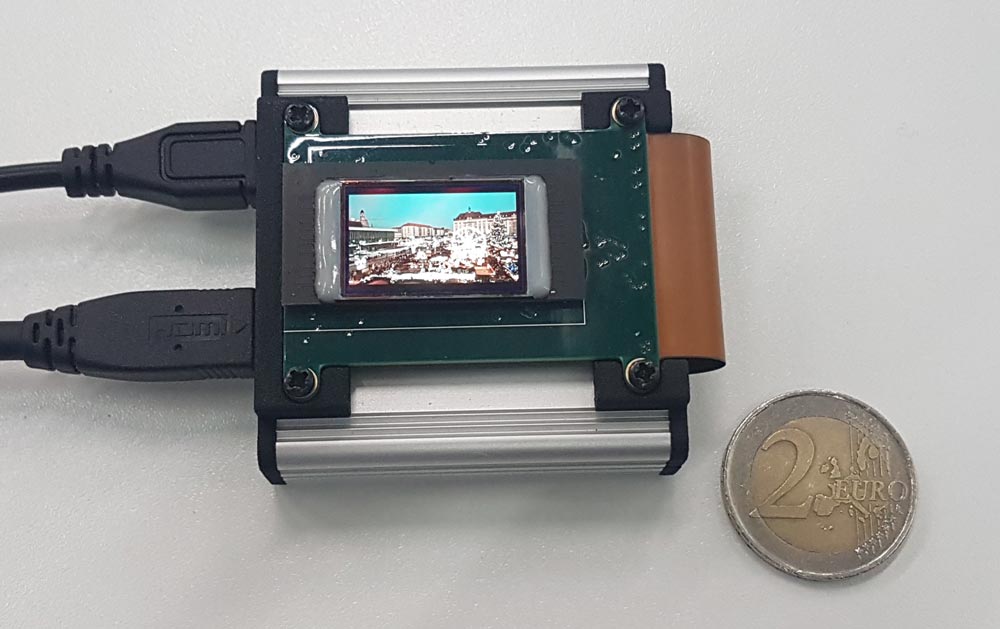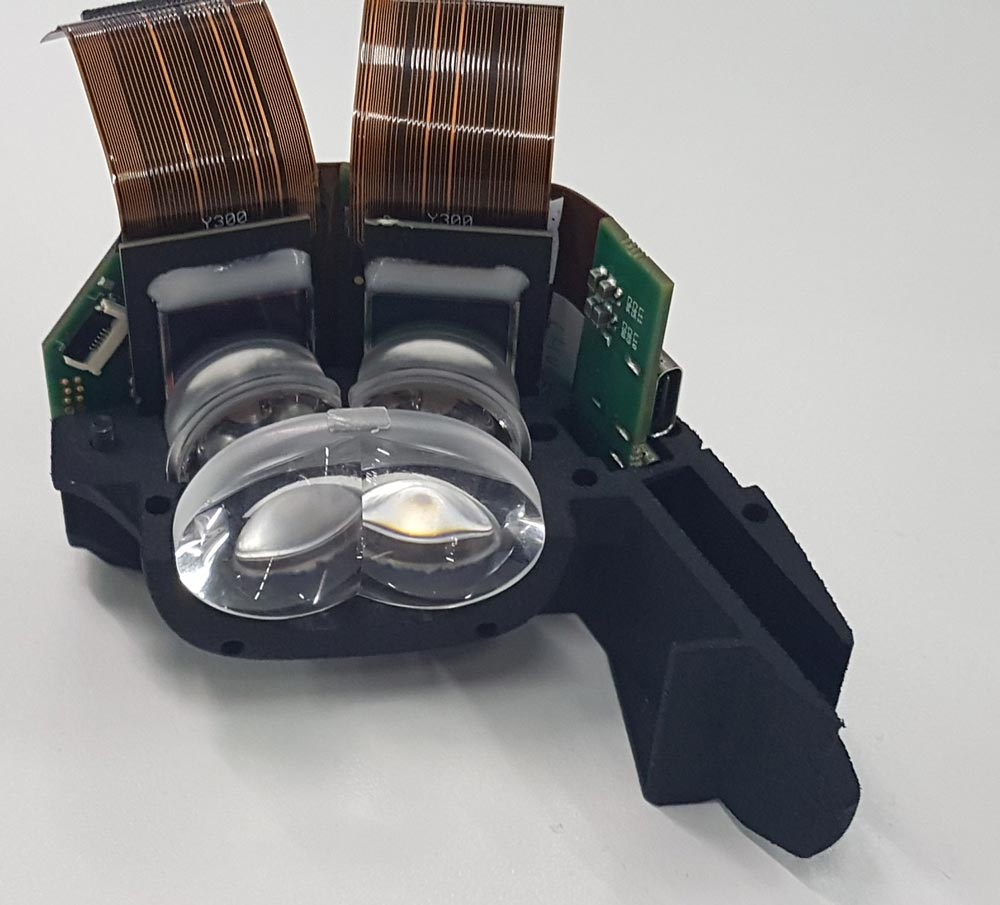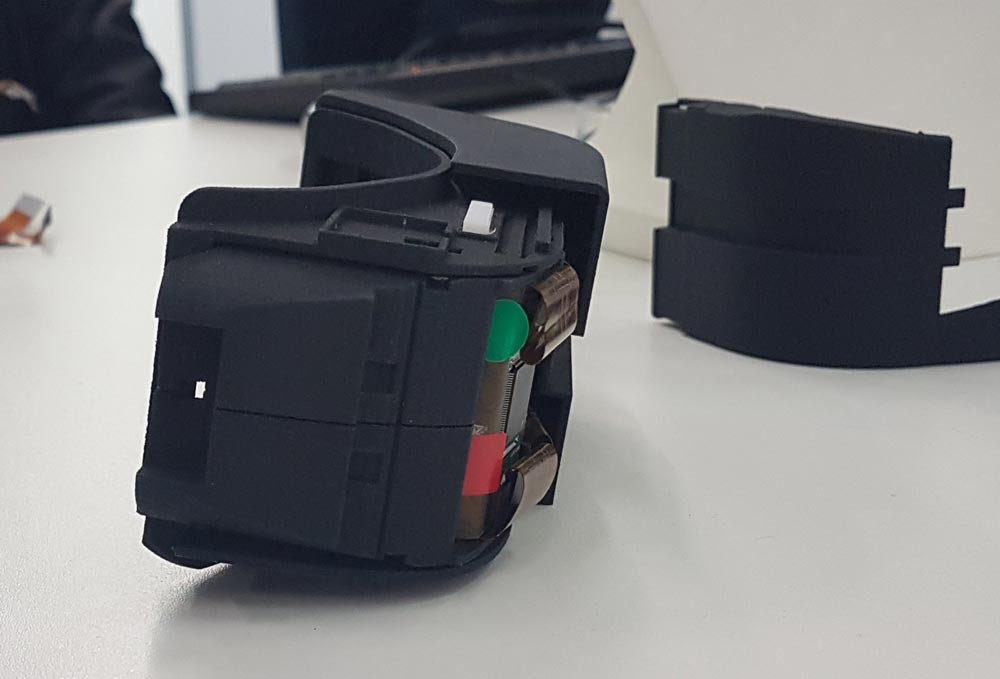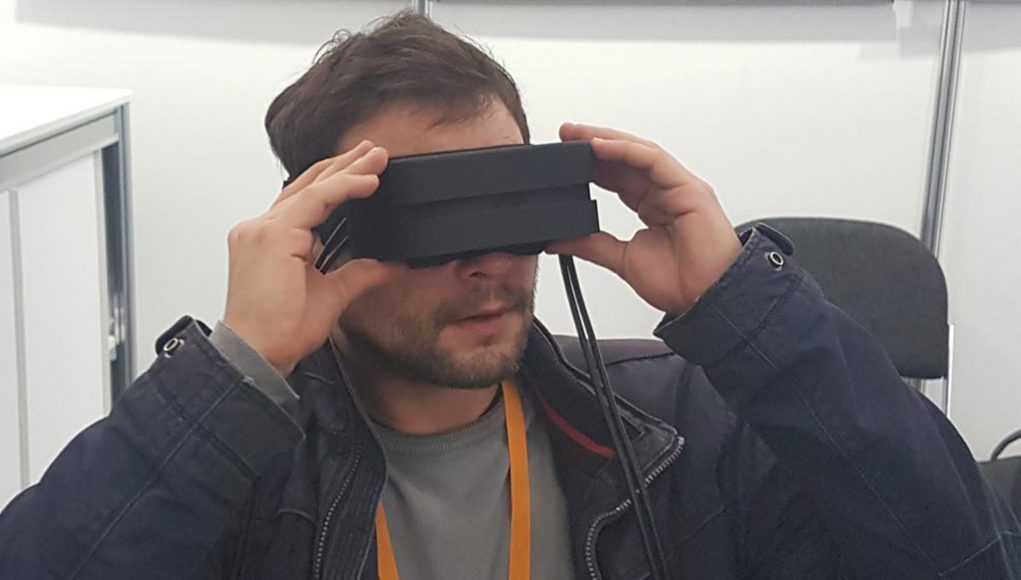Fraunhofer, Europe’s largest application-oriented R&D organization, recently unveiled a new VR headset prototype at the Augmented World Expo (AWE) in Munich this past week that aims to reduce the size and weight of VR headsets by using high-resolution microdisplays.
German VR publication MIXED (German) got a chance to try out the unnamed prototype headset, reporting that it incorporates four OLED microdisplays, each of them offering a resolution of 1,920 × 1,200 pixels (2,300 ppi) at a frame rate of up to 120 Hz.

The headset uses two OLED/CMOS WUXGA microdisplays per eye, giving each eye a hypothetical max resolution of 4,800 × 1,920 pixels. MIXED reports that the displays were demonstrated at AWE running at 60Hz though, something that was likely done to mitigate the massive GPU compute requirement needed to push such a high-resolution and frame rate.
The optical system (cross-section seen below) comes from the project partner Limbak, an IP company developing extreme-performance optics for virtual and augmented Reality.

The headset’s fused optics are said to present the user with a seamless view, and boasts around a 100 degree horizontal field of view (FOV), and 75 degree vertical FOV—about the same horizontally as an Oculus Rift or HTC Vive, and around 25% smaller vertically than the two. What’s more, the prototype headset is reportedly a quarter of the weight of standard consumer headsets, which hover around 500g (~1 lbs).
MIXED’s Tobias Kammann remarks that Fraunhofer’s prototype headset is “outstandingly sharp: individual pixels are barely recognizable. If you focus on the center of the image, the image impression is clean, detailed and better than, for example, Vive Pro or Oculus Go.”

Kammann however reports the prototype includes noticeable optical distortion and some blurriness, giving him the impression of looking at the OLED displays through “the bottom of a [glass] bottle.”
These are still early days though, as the 3D-printed prototype was only fully assembled about four weeks ago—not nearly enough time to perfect the in-software distortion correction required for a viewing experience that truly does the content justice. According to Kammann, the visuals used in the demo were also less than impressive, offering AWE-goers a look at a static scene in a virtual living room and a high-resolution 360-degree photo of a forest.
Still, Fraunhofer’s headset offers a glimpse at a display pathway that some manufacturers may opt-in for in the future; consumers are bound to expect slimmer devices that are more akin to glasses, and less like the big black ‘face boxes’ of today’s generation. That said, it’s still too early to say when a microdisplay VR headset will come to consumers, although Fraunhofer is currently looking for manufacturing partners who will further support the product’s development.










